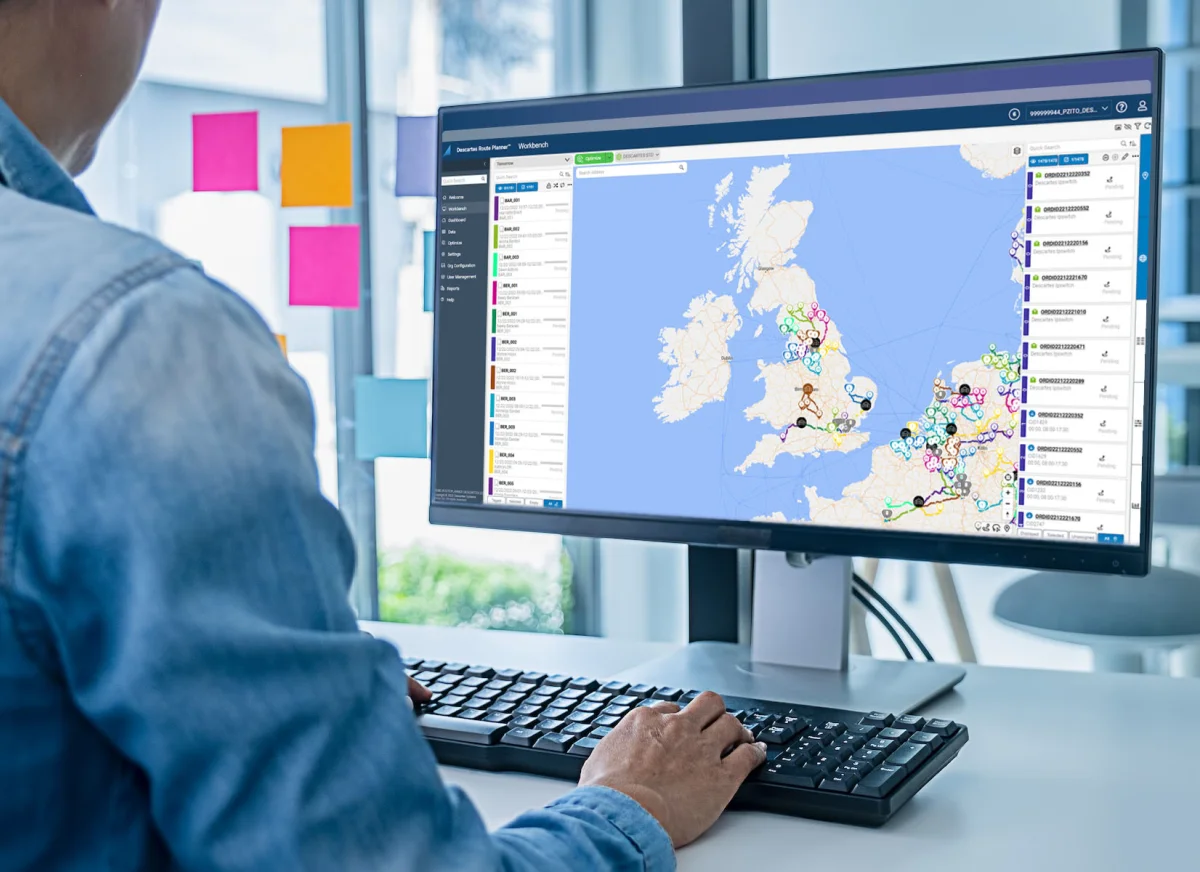Data Runs: Proof of Value for Route Optimisation Software

Before investing in a Descartes route optimisation solution, many businesses take part in a data run. This involves using real-world data to demonstrate the value and potential return on investment (ROI) of the software.
Companies typically discover that route optimisation will reduce fuel consumption, increase delivery productivity, and even improve the customer experience.
In this video, the Descartes team walks you through the benefits of a data run, and things to consider before you get started. Watch the video or keep reading to find out more.

What is a data run?
In a data run, real data from your system is pulled into the Descartes route optimisation engine. This allows you to compare the optimised results with the results from your current route planning process.
A data run should never be the first stage of the purchase process. Before you invest time in this exercise, Descartes will work with you closely to identify your challenges and opportunities for improvement with the best solution.

What are the benefits of a data run?
Here are four ways that a data run can help you to make a purchase decision:
Predicting the potential ROI
By comparing your existing routes to the optimised routes, you can prove the value of optimisation. For example, you might notice a reduction in miles driven, in the number of vehicles necessary, or in staff overtime.
Assess the quality of the routes
By using real data, you can compare your existing routes with the optimised outcome to determine if the routes meet your business needs. For example:
-
Do the new routes reduce operational costs?
-
Will you be able to make more deliveries on time?
Evaluate technical capabilities
A data run allows you to check whether the software provider can handle the specific complexities of your business. For instance, does the solution consider constraints such as commercial vehicle restrictions?
Building a business case
Establishing the ROI of the solution makes it easier to secure buy-in from internal stakeholders.
In short, a data run will provide evidence of the value of route optimisation software before you make an investment.

Types of data run
Data runs can be used to make a straightforward comparison, or to find new ways to improve your delivery service.
Comparing manual and optimised planning
Many businesses plan routes manually using basic tools such as Excel or Google Maps, supplemented with local knowledge.
A data run can be used to compare optimised routes with manually planned routes, without changing any other operational aspects.
This step demonstrates how route optimisation alone can save miles, increase delivery density, reduce costs, and help you to meet delivery timelines.
Evaluating the impact of operational changes
When your team is bogged down in manual planning, they don’t have the capacity to work on improving the business.
During a data run, the software can simulate scenarios to answer high-level questions and identify inefficiencies.
For instance, with manual planning it’s hard to plan a lot of routes or jobs at the same time. A route optimiser can help you to plan several territories at the same time, avoiding artificial territory boundaries. This ensures that each stop is being served from the most efficient depot.
You might also address common questions such as “What if we changed the mix of vehicles in our fleet by adding EVs?” or “What if our customer profile changes?”
This step demonstrates the additional value that your business can glean from route optimisation software.

What’s the key to a successful data run?
When conducted correctly, data runs are a useful tool to evaluate new software. Here’s how to get the most value out of a data run:
Quality data
Results will only be as accurate as the data that’s used, so it’s worth taking the time to source good-quality data. A large volume of poor data may result in skewed results, whereas a smaller volume of good-quality data can be used to extrapolate the bigger picture.
Baseline / benchmark
By using good-quality data, you’ll be able to establish a realistic benchmark which you can compare with the optimised results.
Constraints
Talk to Descartes about your real-world delivery constraints. These might include road restrictions, drivers’ hours, or specialised vehicles for certain products.
Goals and KPIs
A good vendor will take the time to discuss what’s important to your business. You may have specific goals such as increasing first-time delivery success, or reducing overtime for warehouse staff.
Use these objectives to guide the success metrics for the data run.
During the data run, you may see additional benefits that you hadn’t anticipated. But without initial KPIs in place, you won’t be able to evaluate the solution against your most pressing business goals.

Considerations for launching a data run
The data run is a powerful tool that will help you to make an informed purchase decision. Before moving forward, here are some things to consider:
Time investment
A successful data run will require some time investment from your business.
Before the data run takes place, you will need to outline your objectives and delivery constraints. You'll then need to source real-world data that can be used in the exercise.
While optimisations can be run quickly, it may be necessary to go through several iterations to find the best solution for your business.
Scope of the data run
A data run doesn't need to validate every aspect of the solution. Rather, it’s an opportunity to prove business value and align with Descartes on your objectives.
Conclusion
A meaningful data run starts with well-defined goals and ends with clear proof of value. This allows you to move forward in the buying process, confident that the solution is a good fit for your business needs.
Find out how route optimisation could help you meet your business goals:

